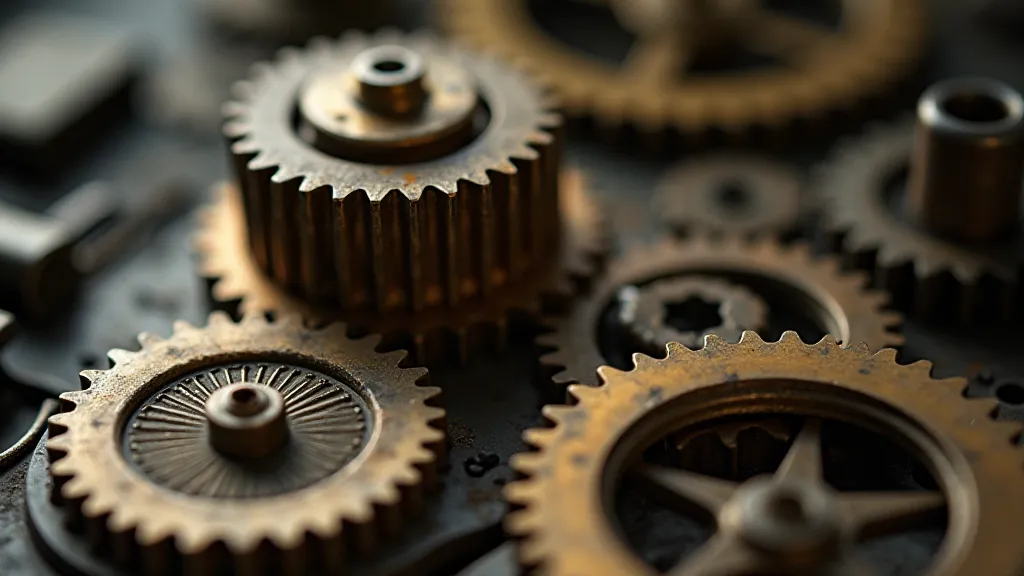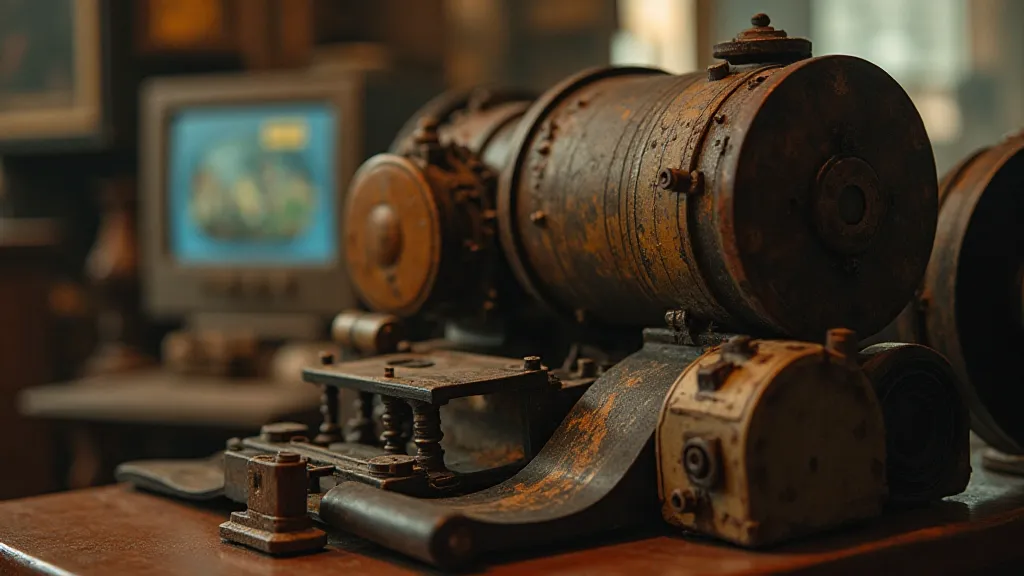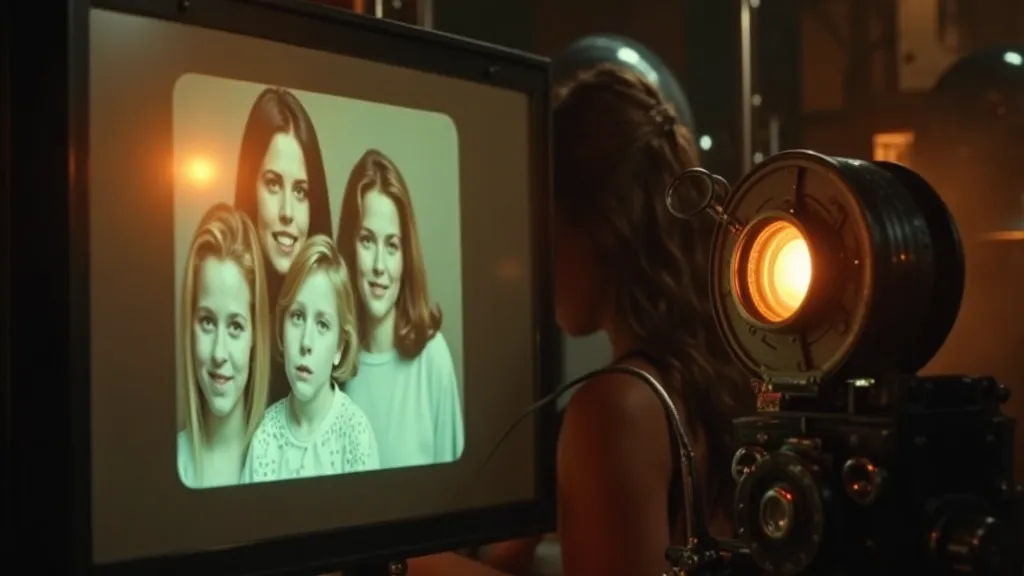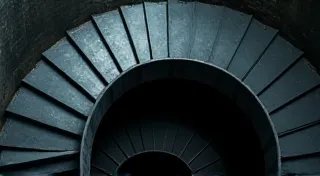A Rhapsody in Gears: Fine-Tuning the Carousel Rotation Mechanism
There's a quiet poetry in the operation of a vintage carousel slide projector. More than just projecting images, it’s a miniature mechanical ballet – a dance of light, optics, and precisely engineered components. Among these, the carousel rotation mechanism stands out. It's the heart of the presentation, the constant, rhythmic pulse that brings a sequence of memories to life. But time, dust, and the occasional unfortunate encounter with a dropped item can throw this dance off rhythm. This isn’s merely a repair; it's a restoration of a subtle, vital beauty.
I remember my grandfather’s projector, a Kodak Carousel TC. The whir of the motor, the smooth, almost hypnotic rotation of the carousel – it was the soundtrack to countless family gatherings. Those slides weren't just pictures; they were portals to another time, echoing with laughter, adventure, and the warmth of shared experiences. The reliability of that rotation, the feeling of a consistent, perfectly timed presentation, instilled in me a deep appreciation for the craftsmanship involved. When it eventually faltered, it felt like losing a piece of that shared history.

Understanding the Carousel Mechanism – More Than Just Gears
Most carousel projectors utilize a belt-and-pulley system, or occasionally, a geared direct-drive system, to rotate the carousel. The motor provides the primary power, which is then transferred through a series of pulleys and a belt to the carousel itself. The belt's tension and the pulley ratios dictate the rotational speed. In geared systems, a series of interconnected gears, often lubricated to minimize friction, directly drives the carousel. The complexities of these systems, even seemingly simple ones, often rely on precisely calibrated components – often involving springs – to ensure smooth and reliable operation. For those interested in understanding how these springs contribute to the overall function, a deeper dive into The Language of Springs: A Guide to Replacing and Adjusting Tension Springs can be illuminating.
The design intent was always precision. Manufacturers like Kodak, Carousel, and Sato invested heavily in engineering to ensure consistent image presentation. Variations in rotation speed, even seemingly minor ones, can disrupt the pacing of a slide show, making it feel rushed, disjointed, or simply "off." More importantly, jerky or uneven rotation can damage the slides themselves, scratching the emulsion and shortening their lifespan. Repairing the carousel is about preserving not just the projector, but the integrity of the slide collection it serves.
Common Problems and Diagnostics – Troubleshooting the Rhythm
Let's explore some typical issues that can affect the carousel's performance:
- Belt Slippage: This is by far the most common culprit. Old rubber belts become brittle and lose their grip on the pulleys. The belt may visibly slip during operation, producing a squealing or chirping sound.
- Pulley Wear: Over time, pulleys can become warped or glazed, reducing their ability to grip the belt effectively.
- Gear Lubrication (Geared Systems): Gears require periodic lubrication to minimize friction and prevent wear. Dried or hardened grease can impede rotation.
- Motor Weakness: Although less directly related to the carousel itself, a weakening motor can struggle to overcome friction, leading to slow or uneven rotation.
- Debris Accumulation: Dust and debris can accumulate in the mechanism, adding friction and hindering movement.
- Uncommon Modifications & Hacks: Sometimes, owners have modified their projectors to enhance performance or introduce new features. Understanding the potential impact of such alterations is crucial for proper diagnostics. For those interested in exploring these non-standard configurations, Beyond the Manual: Uncommon Carousel Projector Modifications and Hacks provides insight into these creative adjustments.
Diagnostic steps are relatively straightforward. Carefully observe the carousel during operation. Listen for unusual noises. Visually inspect the belt for cracks and wear. If you have a geared system, manually rotate the carousel and feel for any resistance or binding. A simple lubrication can often resolve minor issues, while more significant problems may require belt or pulley replacement. It's also worth noting that the entire system is more than just mechanical - there's a complex interplay of electrical components at play. For those wanting a full understanding, mapping a carousel projector's internal circuitry can be quite revealing. Those eager to chart that journey might appreciate The Cartographer of Memories: Mapping a Carousel Projector's Internal Circuitry.

Repair and Restoration Techniques – Reclaiming the Rhythm
Belt Replacement: This is a surprisingly delicate process. You’re not just swapping a part; you’re restoring a critical element of the projector’s functionality. Finding the correct replacement belt is paramount. Fortunately, a small online community dedicated to vintage slide projectors often has resources and suppliers. The belt needs to be the correct length, width, and thickness to fit snugly on the pulleys. When fitting a new belt, ensure it is properly seated and tensioned. Too loose, and it will slip; too tight, and it will put undue stress on the motor and pulleys.
Pulley Cleaning/Replacement: Clean pulleys with a solvent designed for rubber or plastic. Avoid harsh chemicals that could damage the material. If the pulleys are significantly worn or warped, replacement is the best option. Finding original pulleys can be challenging, so look for compatible replacements.
Gear Lubrication (Geared Systems): Apply a specialized lubricant designed for precision gears. Avoid using excessive amounts, as this can attract dust and create more problems. Spin the carousel manually after applying lubricant to ensure it's evenly distributed. Beyond the lubricants themselves, the entire film carrier mechanism is critical for preventing damage to the slides. Sometimes these carriers fail, leading to projection issues. Understanding the common failure points of these film carriers is essential for a thorough restoration.
Cleaning and Dust Removal: Use compressed air to blow out dust and debris from the carousel mechanism. A small brush can also be helpful for dislodging stubborn particles. Regular cleaning is an essential part of preventative maintenance.
The Value of Preservation – More Than Mechanical Restoration
Repairing a vintage carousel slide projector isn't merely a technical exercise; it's an act of preservation. These projectors represent a bygone era of analog photography, a time when presentations were deliberate and tactile. The smooth, rhythmic rotation of the carousel isn’t just a mechanical function; it's a connection to a shared past, a tangible link to memories and experiences. The fragility of the film itself contributes to this sense of preciousness. It's a reminder of the care and attention that went into creating these visual records. Understanding the mechanics of slide projection also necessitates an appreciation of the fragility of the slides themselves, and the challenges associated with their long-term preservation.
The dedication to craftsmanship evident in these projectors deserves to be honored and kept alive. Sometimes, the entire system – from the motor to the optics – can be complex and require a more involved repair than just a simple adjustment. For those facing a particularly challenging repair, it's important to remember the importance of these machines as testaments to a simpler, more deliberate way of sharing memories.
The quiet hum of a restored carousel, the predictable rhythm of slide progression – these aren’t just sounds; they’s echoes of laughter, storytelling, and the joy of sharing moments together. It's a rhapsody in gears, a miniature mechanical orchestra playing a timeless melody. And in preserving this, we keep a piece of history alive. Preserving the film itself is just as important as maintaining the projector. Sometimes the slides suffer damage – scratches, fading, or even physical degradation. Dealing with these issues requires a separate skillset and attention to detail.
Ultimately, the value of restoring a carousel projector extends beyond the mechanical realm. It’s about reconnecting with a time when sharing memories was a communal experience, celebrated through the magic of light and motion. It’s about ensuring that future generations can experience the joy of watching these vintage projectors bring stories to life.






